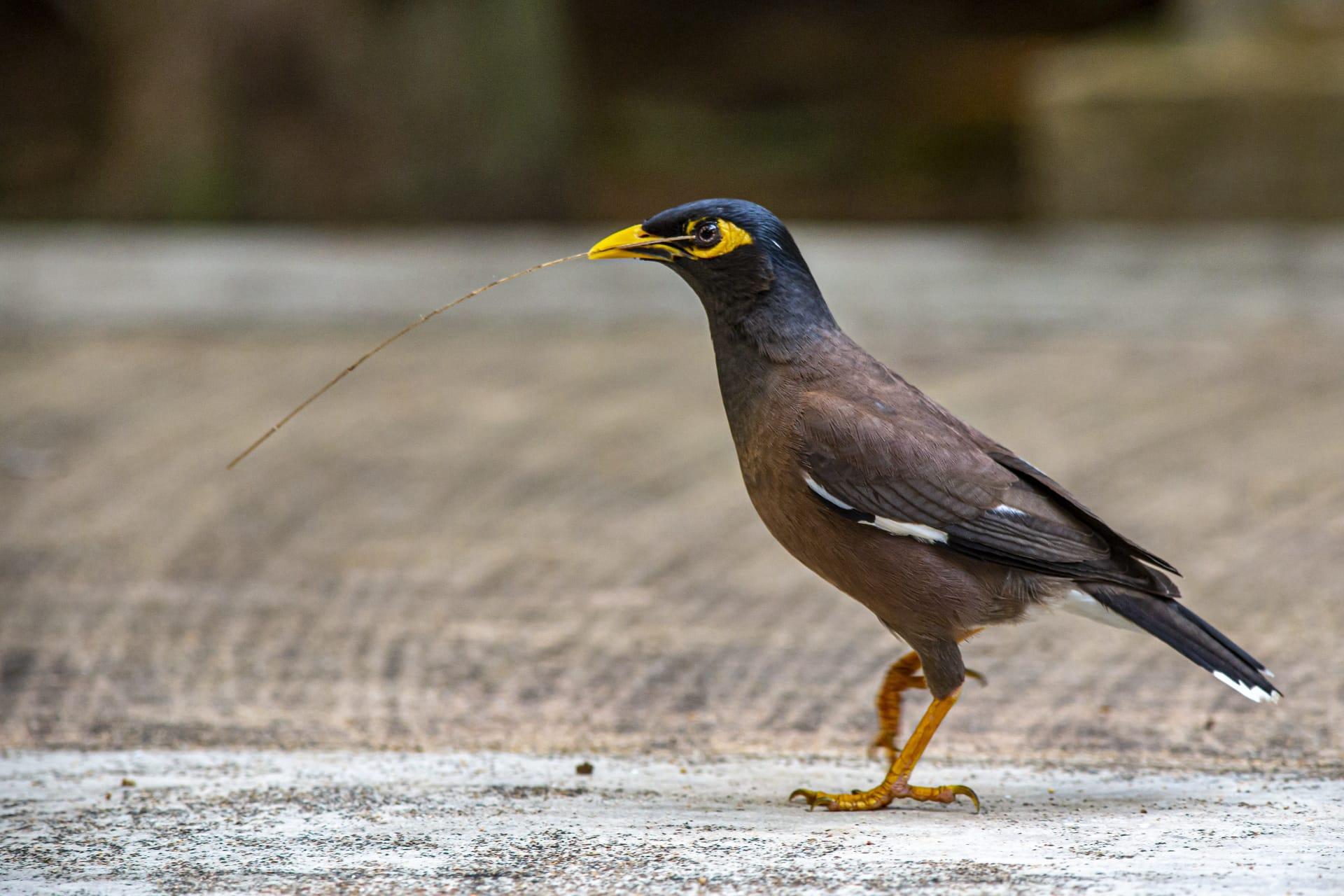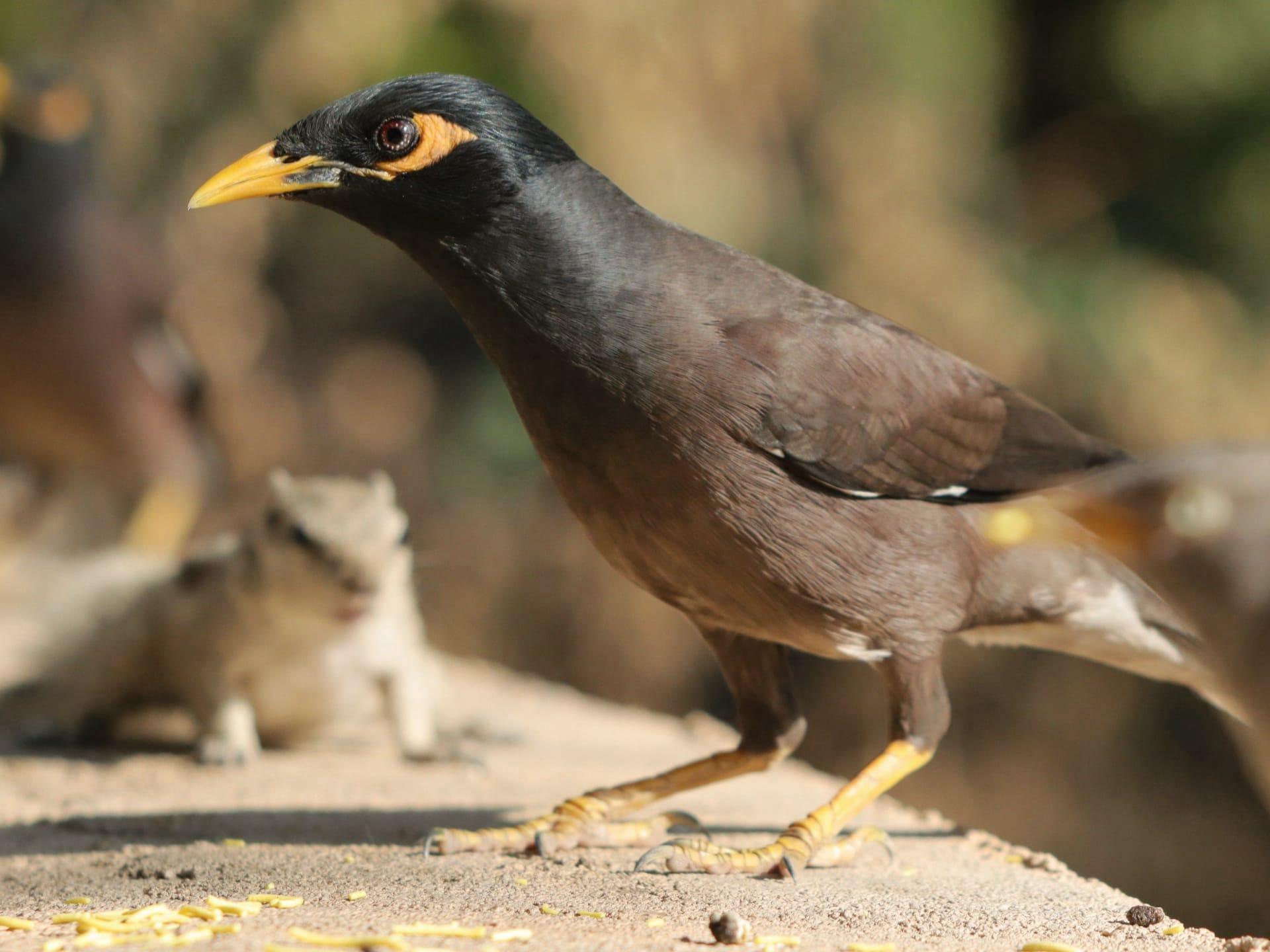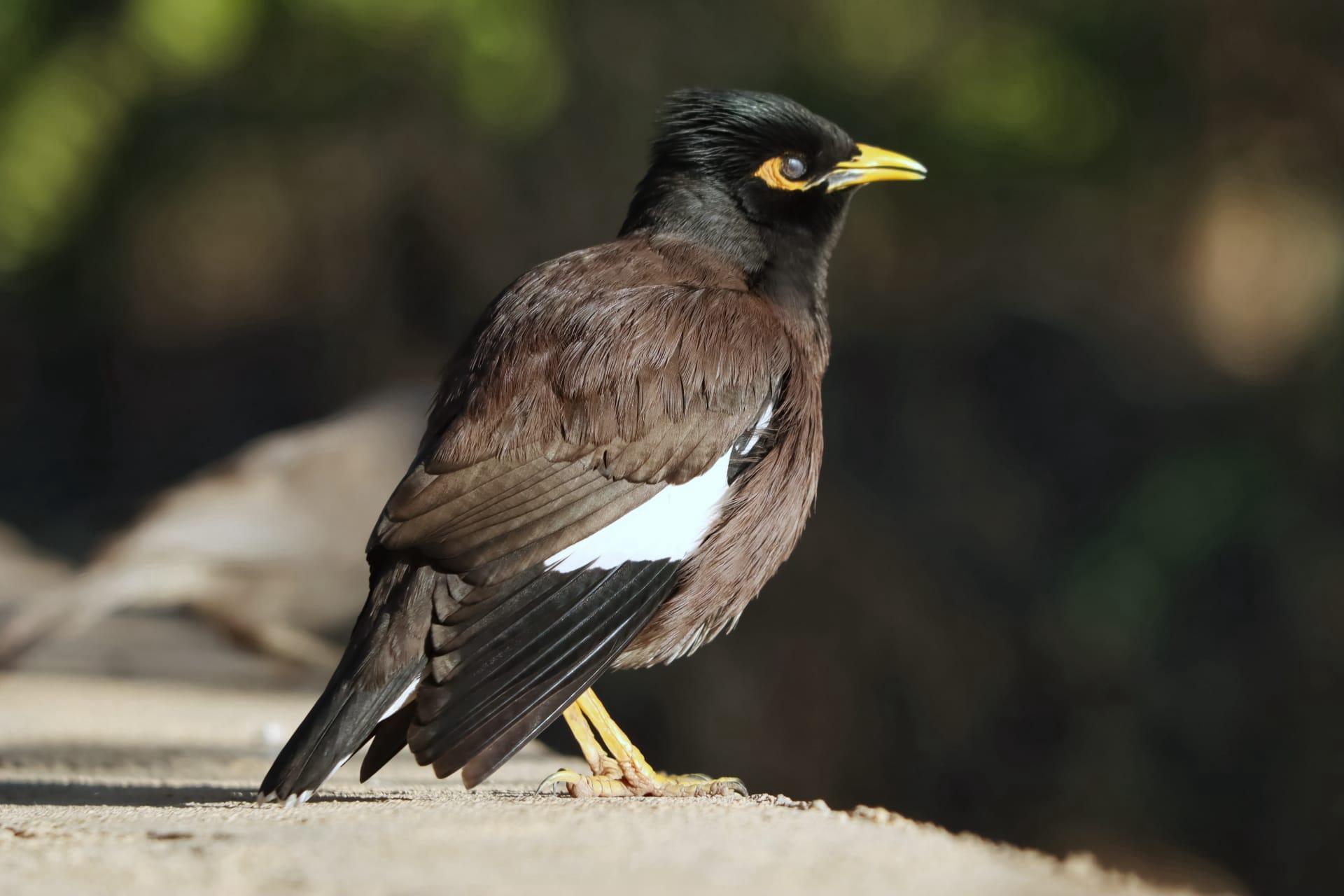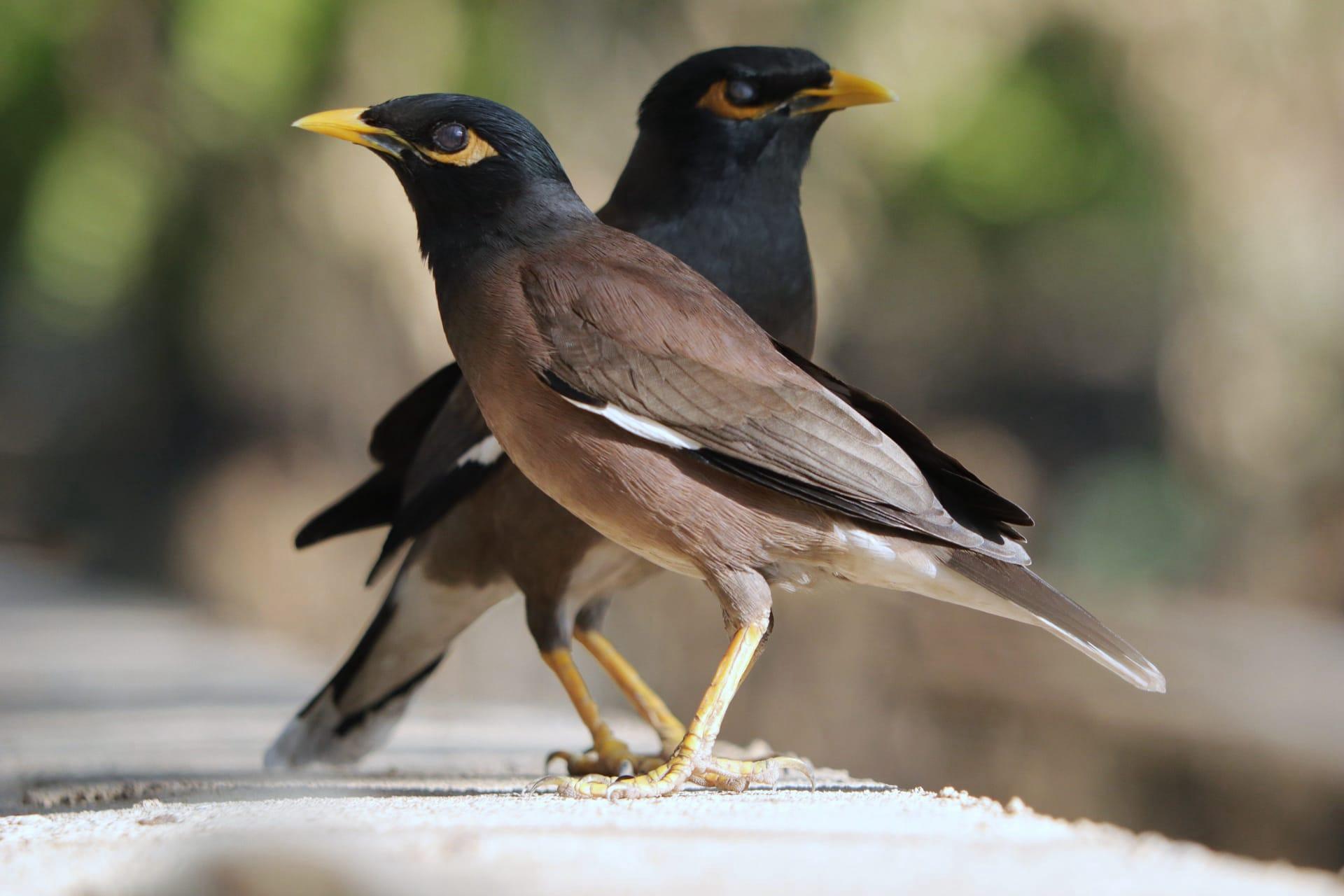1
Mynas, known for their impressive vocal abilities, can mimic human speech and other sounds they hear in their environment. This remarkable talent is due to their highly developed vocal cords and a complex brain structure akin to that of parrots. Research shows that mynas can learn and reproduce sounds at a frequency range between 1.2 kHz and 3.6 kHz, which closely matches the frequency range of human speech. This ability makes them popular as pets, especially in regions where keeping songbirds is culturally significant.
Mynas are not just vocal virtuosos but also exhibit fascinating social behaviors. They often engage in cooperative breeding, where other birds, usually offspring from previous broods, help raise the young. This practice, known as 'alloparenting,' is quite rare in the bird world. It's observed that these helper birds assist in various tasks, including feeding the chicks and defending the nest. Studies indicate that nests with helper mynas have a higher success rate in rearing chicks than those without, highlighting the evolutionary benefits of this cooperative behavior.

2
When it comes to diet, mynas are incredibly versatile eaters. They are omnivores, consuming a wide range of foods from fruits and nectar to insects and small vertebrates. This dietary flexibility has allowed them to thrive in various habitats, including urban areas. In some places, mynas have adapted so well to human-altered environments that they are considered pests, often scavenging on waste and dominating other bird species for resources.
Mynas also play a significant role in seed dispersal. Thanks to their varied diet that includes fruits, these birds contribute to the regeneration of plant species by spreading seeds through their droppings. This ecological service is vital for maintaining the diversity and health of ecosystems. The distance mynas can cover while foraging, which can be several kilometers in a day, amplifies their impact on seed dispersal, aiding in the spread of various plant species across large areas.

3
Regarding their habitat, mynas are highly adaptable birds. Originally from Asia, they have successfully colonized many parts of the world, including Australia, the Middle East, and several islands in the Pacific and Indian Oceans. This successful colonization is partly due to their ability to live in a variety of environments, from dense forests to urban landscapes. Their adaptability is so profound that in some regions, they are among the few wildlife species that thrive in heavily urbanized areas.
The intelligence of mynas is another captivating aspect. These birds are known for their problem-solving skills and ability to adapt to new challenges in their environment. In studies, mynas have demonstrated the ability to solve complex tasks, such as opening food containers and navigating mazes. Their intelligence, combined with their social nature, makes them interesting subjects for behavioral studies, providing insights into avian cognition and social structures.

4
Mynas have a significant impact on local ecosystems, both positive and negative. In some areas, they are valued for controlling insect populations, including pests harmful to crops. However, in regions where they are non-native, mynas can become invasive species, competing with local birds for nesting sites and food. Their aggressive behavior and tendency to form large groups can overpower native bird populations, leading to ecological imbalances.
Another intriguing fact about mynas is their monogamous nature. Myna pairs often form strong, long-lasting bonds, staying together throughout the breeding season or even for life. During the breeding season, these pairs engage in mutual preening and other affectionate behaviors, strengthening their bond. This monogamous behavior is accompanied by elaborate courtship rituals, which include singing duets and offering food, demonstrating the complexity of their social interactions.

5
Mynas are also known for their vivid plumage, which varies among species. Some, like the Bali myna, are predominantly white with touches of bright blue around the eyes and yellow on the wings. Others, like the common myna, have a more subdued brown body with a black head. These variations in coloration not only make them visually appealing but also play a role in their social interactions and mating rituals, as birds often display their plumage to attract mates and communicate with peers.
Finally, mynas' impact on human culture should not be overlooked. In many parts of Asia, they are seen as symbols of love and good fortune. Their ability to mimic human speech has made them a popular feature in folklore and stories, often portrayed as wise or mischievous characters. In some cultures, mynas are kept as pets not just for their vocal abilities but also as a symbol of status and prosperity, illustrating the deep connection between these birds and human societies across different regions.